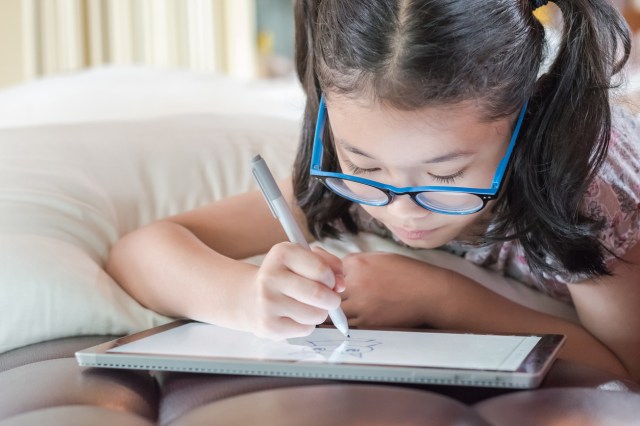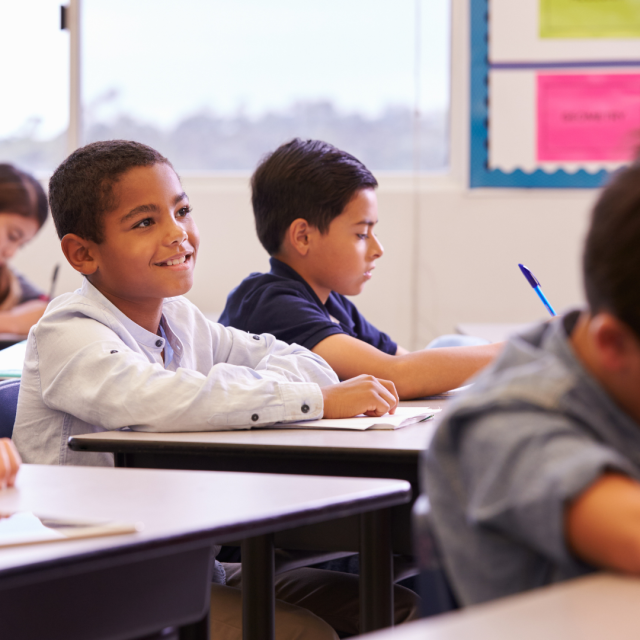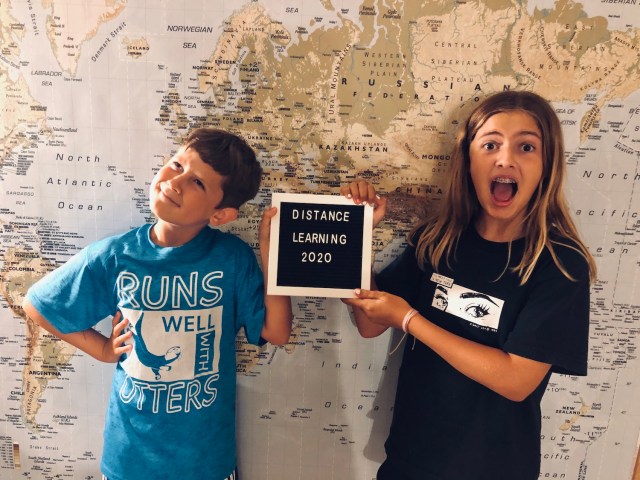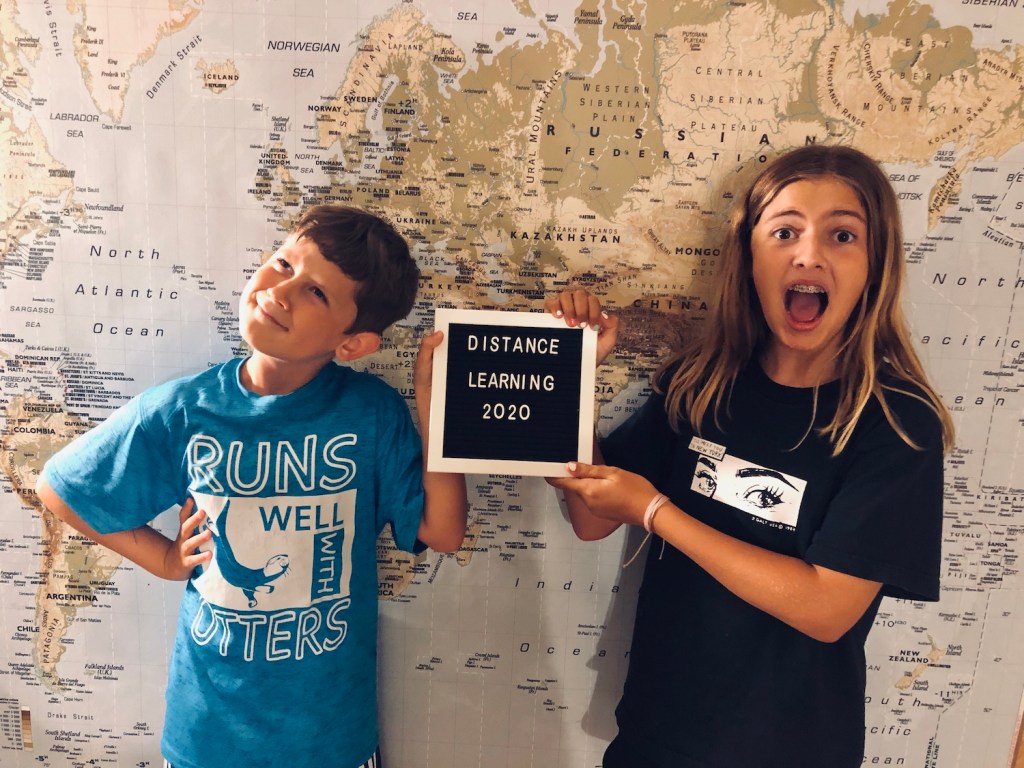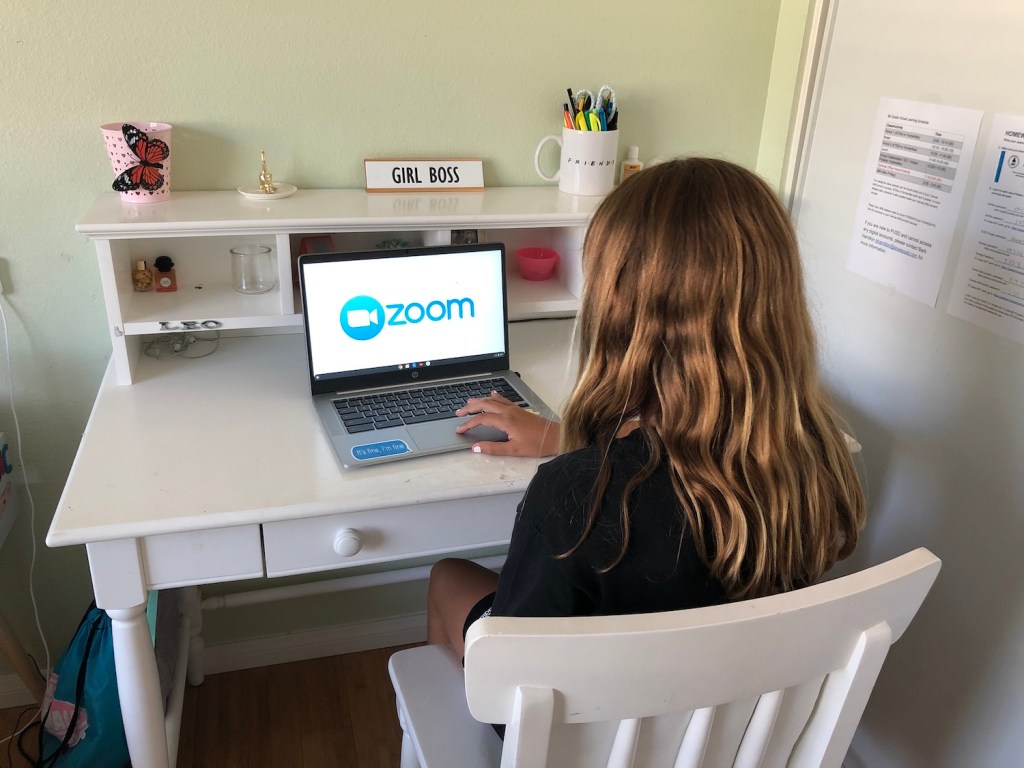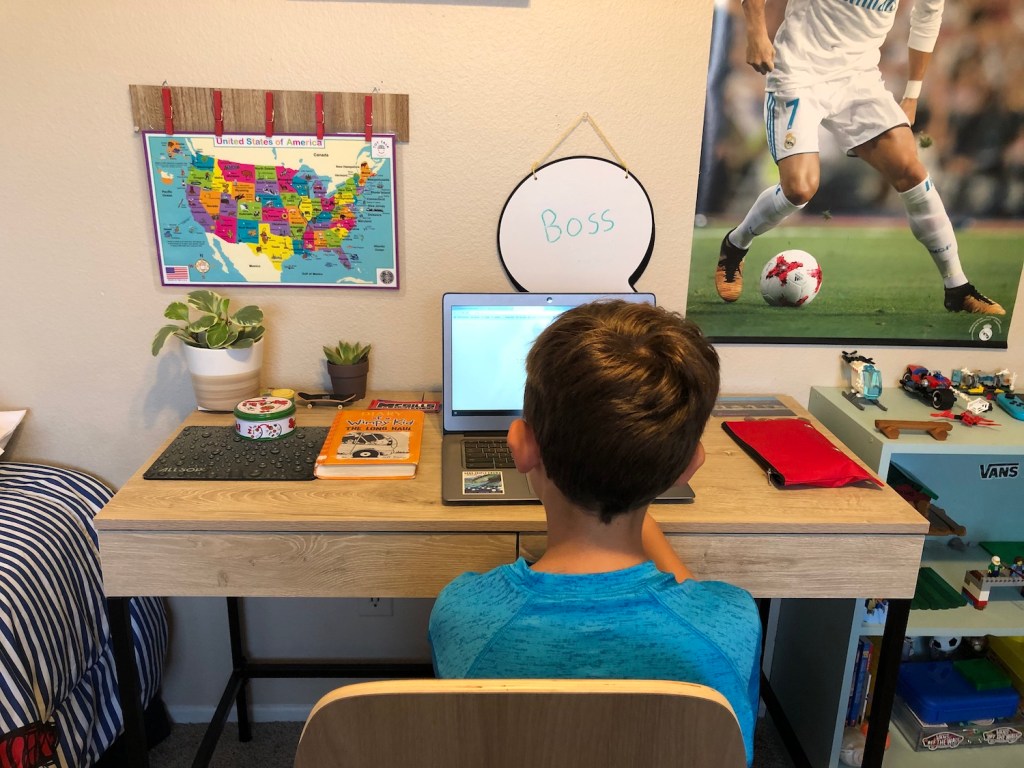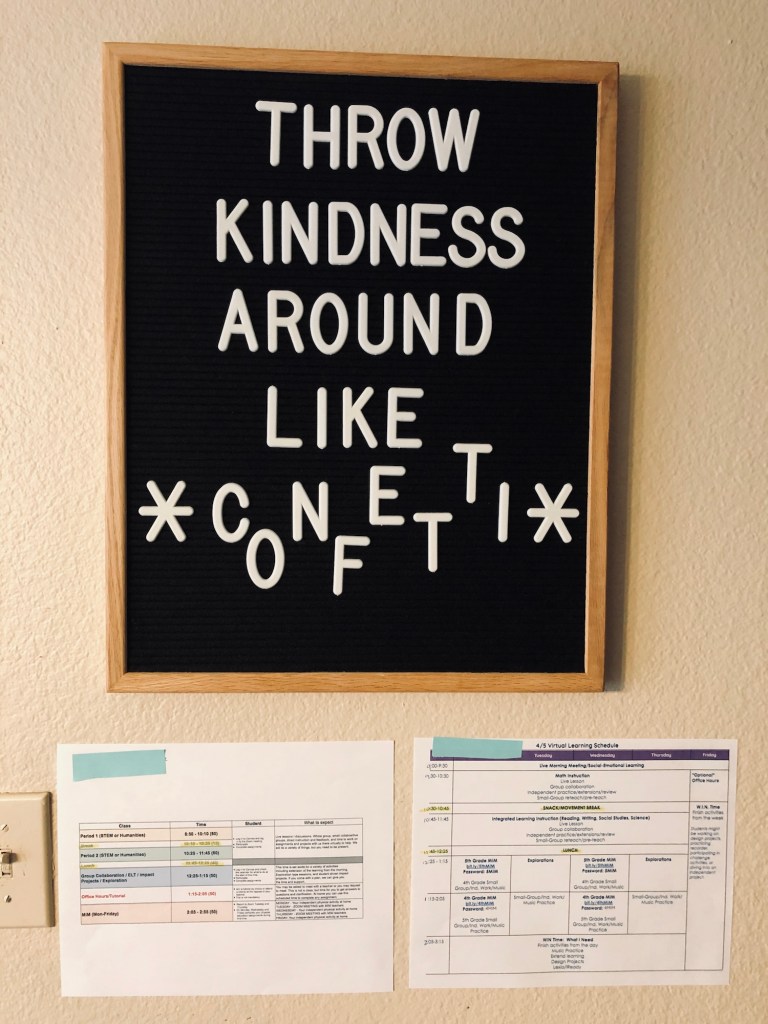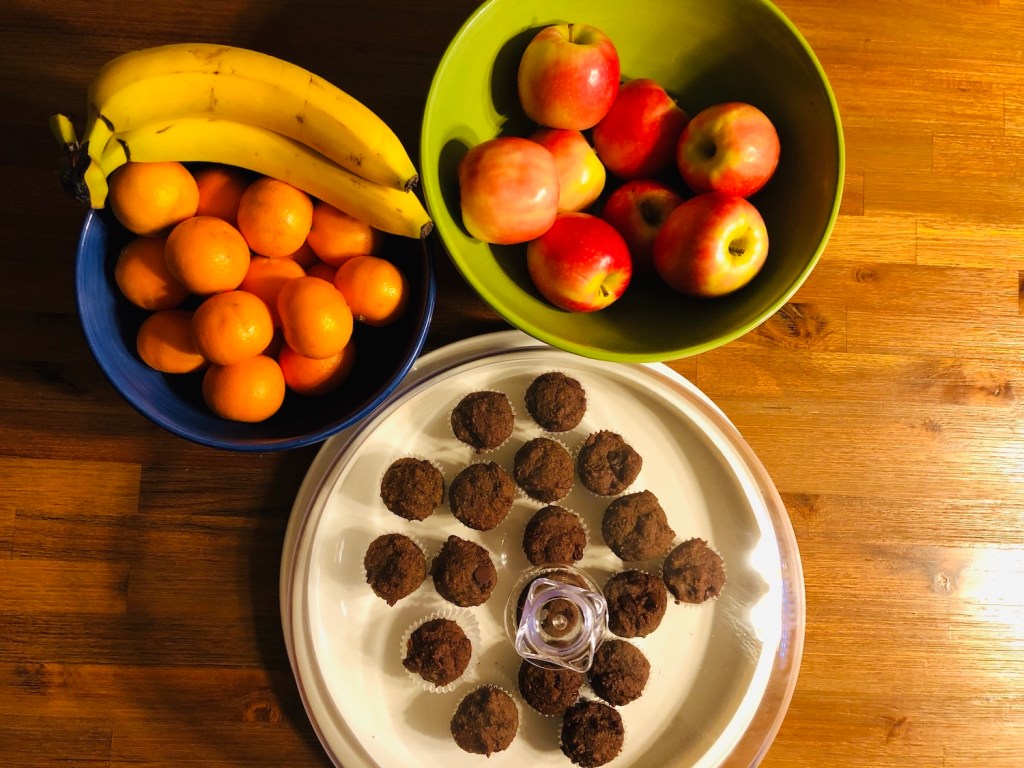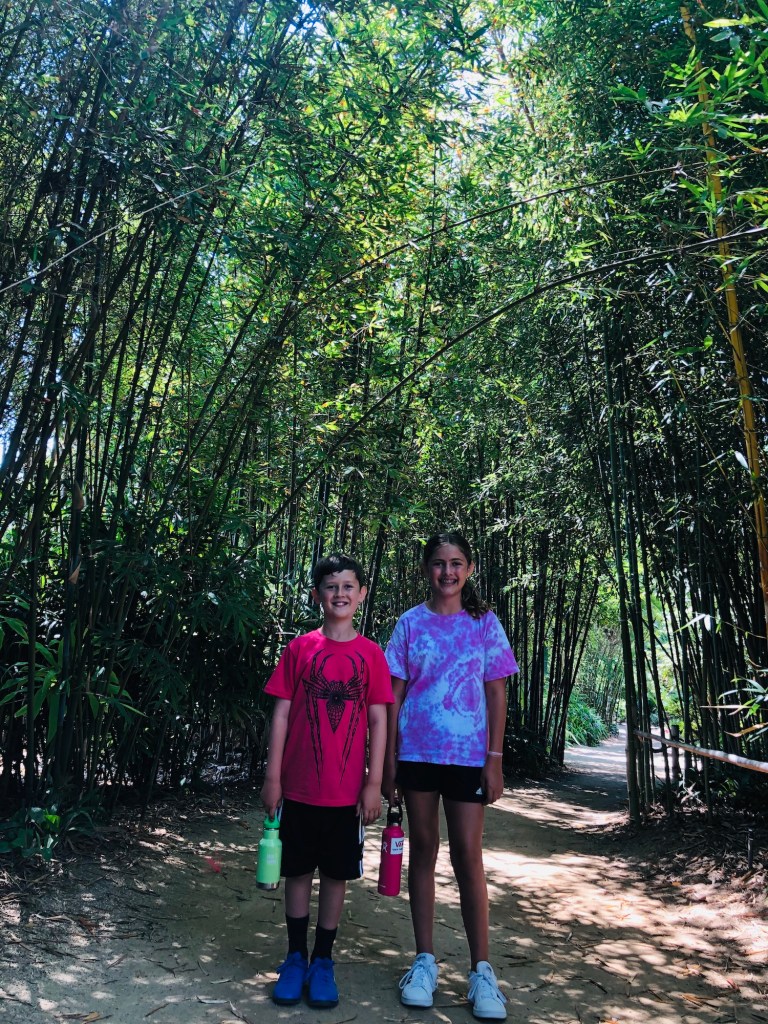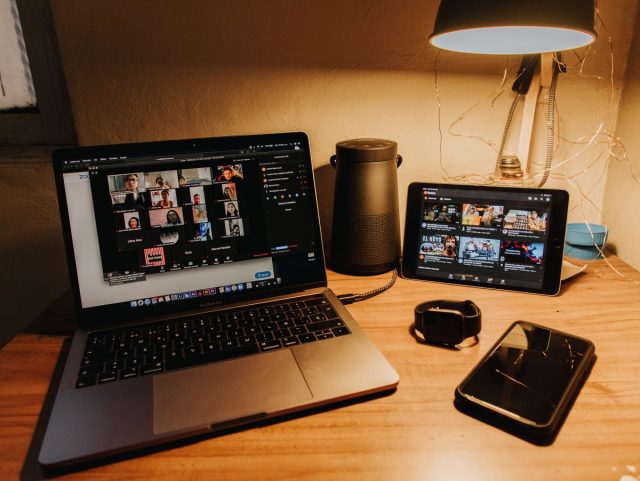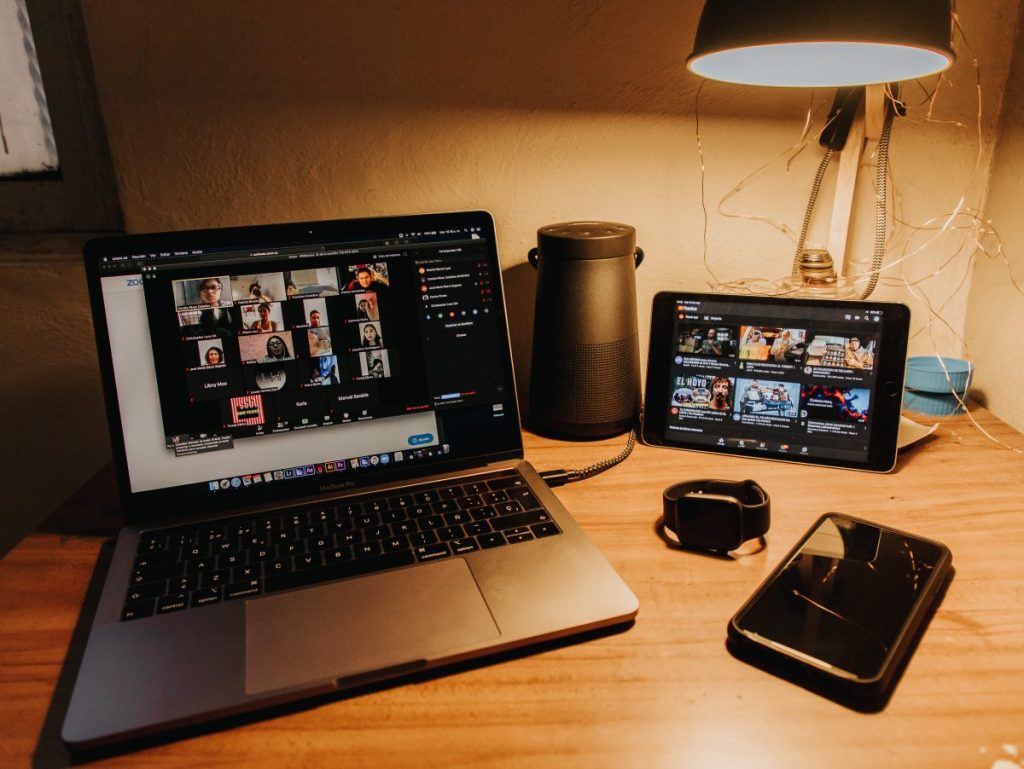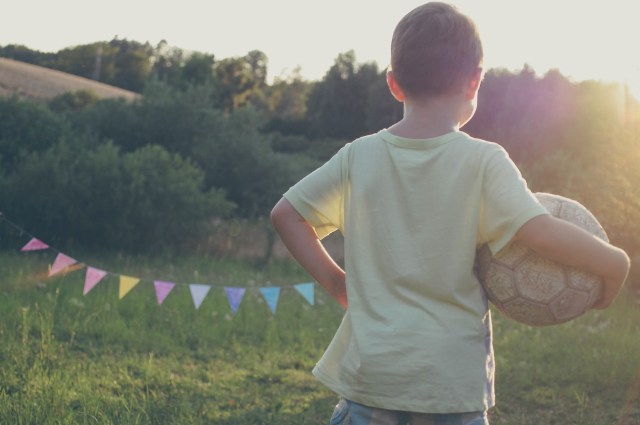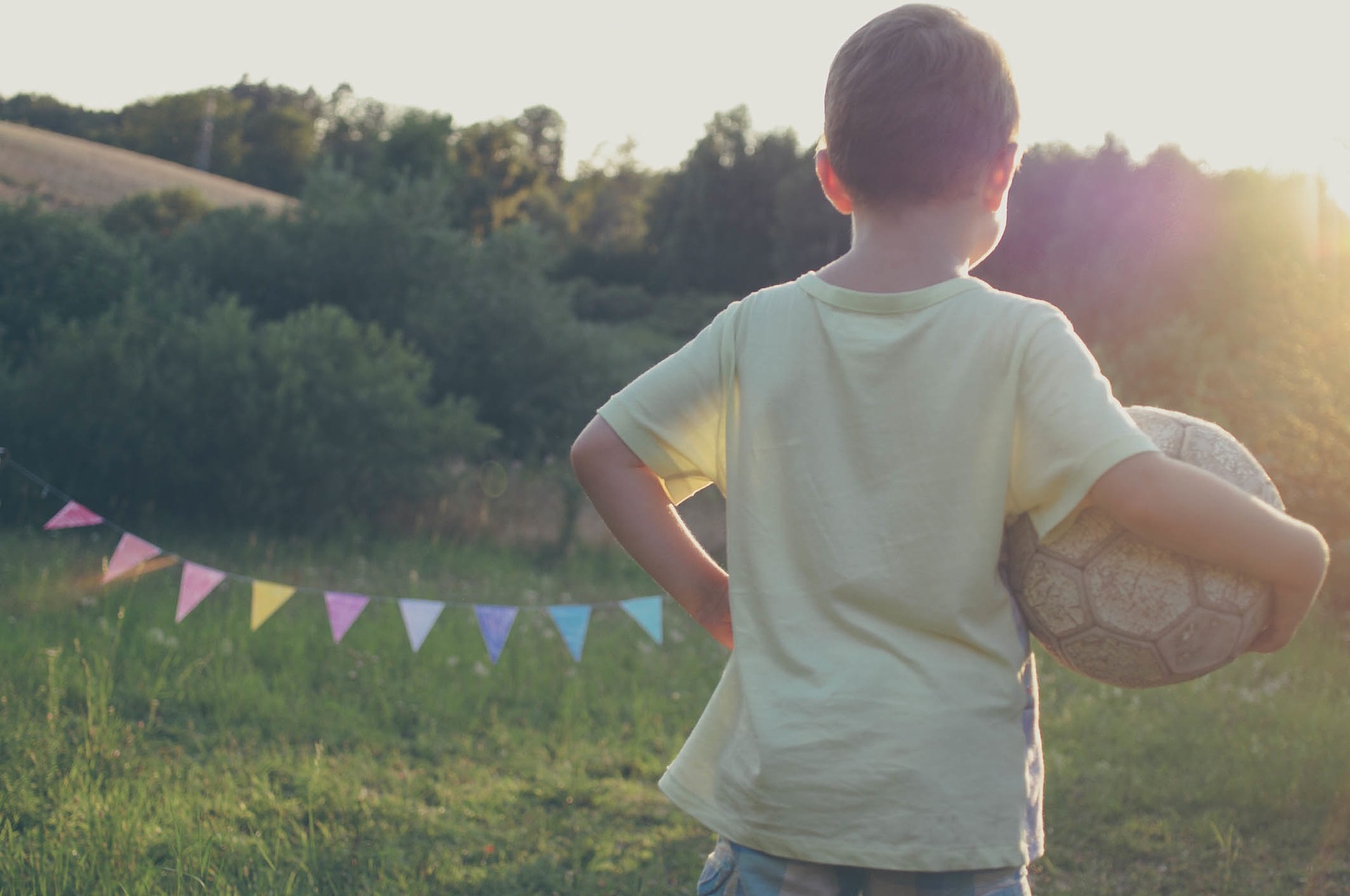Say goodbye to eye strain with the best blue light blocking glasses
Let’s face it, we are all living in a digital world––now more than ever! With iPads becoming part of the classroom, remote learning being more mainstream, and parents working from home, we’re all spending a little more time in front of a screen than usual. Rather than deal with tired eyes, protect them with a pair of blue light blocking glasses. This innovative technology help reduce eye strain, keep headaches at bay and will keep your circadian rhythms in place. The whole family can benefit from a pair (or two). Really, anyone who uses devices throughout the day (read: most of us) will likely notice a difference at the end of the day once they’ve gotten used to wearing them. Keep scrolling to see some of our fave spots to shop for a pair of the must-have best blue light blocking glasses.
Eyeconic
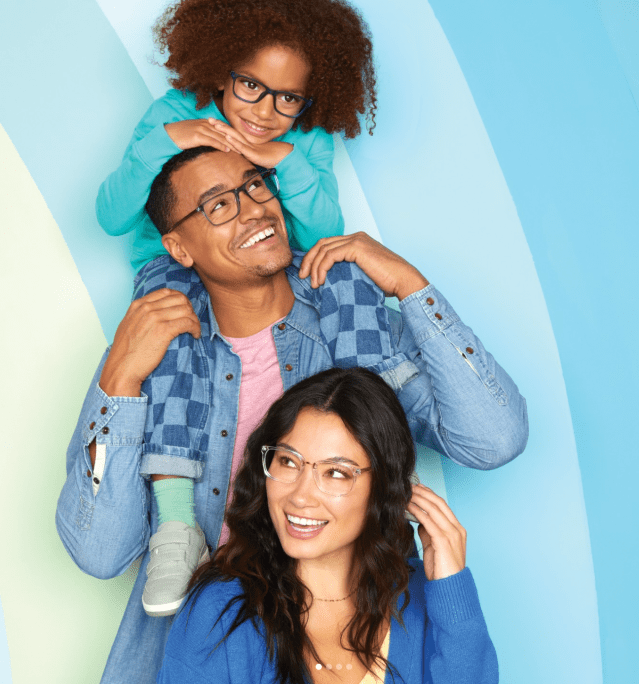
With frames available for adults and kiddos, plus lots of styles and colors, there's something for the whole family. We consider that a major win.
Good to Know: Save 20% with your VSP, Cigna, or Metlife insurance.
Cost: $69 and up
Online: eyeconic.com
Sunglass Hut
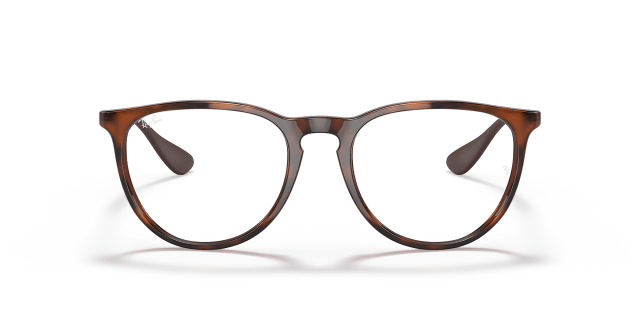
Sunglass Hut is notorious for featuring glasses from the most swoon-worthy designers—PRADA, Versace, Ray-Ban, and more. Their blue light offerings aren't any different. They're oh-so-chic, so you'll want to rock them in front of a screen or not!
Good to know: You can also add your prescription to these frames.
Online sunglasshut.com
GUNNAR Optiks
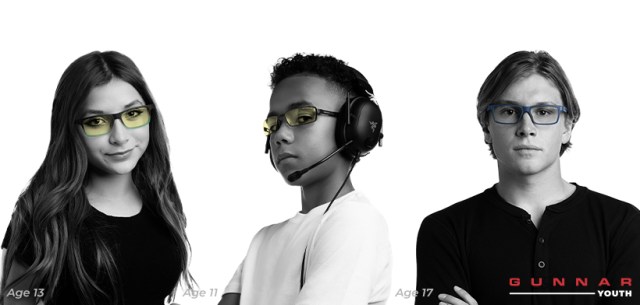
To combat the negative effects of blue light and digital eye strain, GUNNAR, the leader in gaming and computer glasses, has launched the GUNNAR Youth category to provide gaming and computer glasses designed specifically for kids and teens. This line offers smudge-resistant clear and amber tinted lenses, and every pair comes with a protective case and carrying clip.
The current lineup includes: Cruz Kids (ages 4-8 and 8-12), Cruz (age 12+) and MOBA Razer Edition, the first pair of gaming glasses designed specifically for teens. Additional styles will be added throughout the year to give kids and teens more choice as they continue to embrace digital technology both at home and school.
Good to know: GUNNAR offers their youth lines for both prescription and non-prescription frames.
Online: gunnar.com
LOOK OPTIC
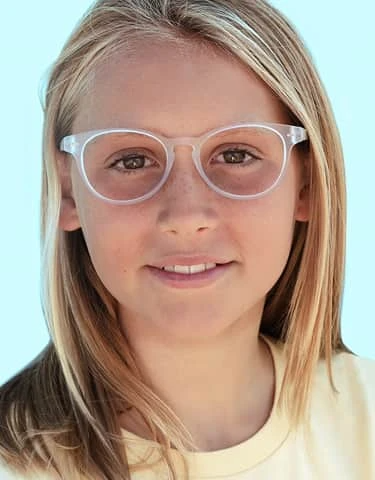
LOOK OPTIC sells super comfy blue light glasses and their newly released children's line means the whole family can be outfitted in this protective style. The unisex frames are available in two styles, the Abbey and Sullivan. Choose from Navy, Tortoise, Clear and Grey Camo.
Good to Know: LOOK Optic offers free shipping and returns, an 90-day risk free trial and will donate $10 to charity: water for every pair of kids glasses purchased.
Cost: $48
Online: lookoptic.com
Knockaround
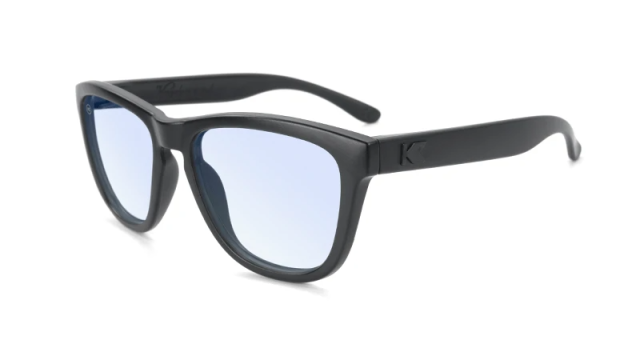
Knockaround is now carrying blue light blocking glasses for littles! The matte black frames are great for kids ages one to five, come with clear blue light blocking lenses, offer UV400 protection, are FDA approved and come with a protective pouch.
Good to Know: Knockaround also carries a huge lineup of colorful sunglasses just for kids.
Cost: $15 & up.
Online: knockaround.com
Barner Brand
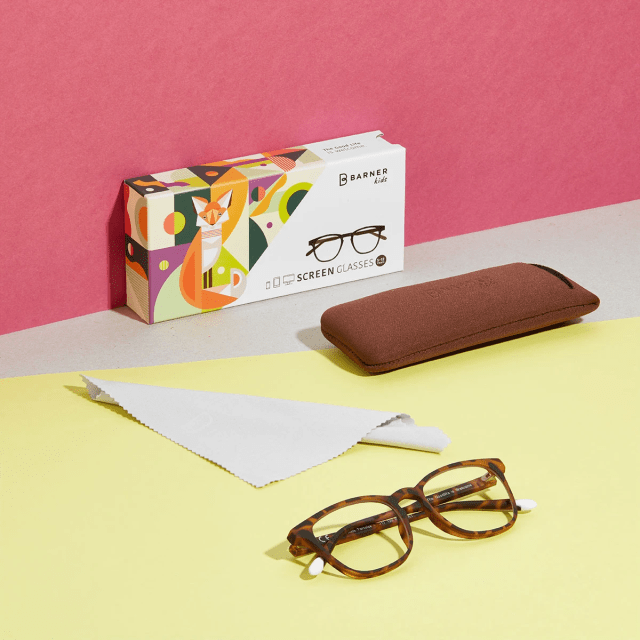
Barner Brands has the entire family covered with options for men, women and kids. Their lenses have a special coating that block 40% of the Blue Light on the 430nm-450nm spectrum, and 100 perent of the Blue Light at 410nm.
Good to know: You can add prescription lenses for an additional $49
Cost: $66-$136
Online: barnerbrand.com
Swannies
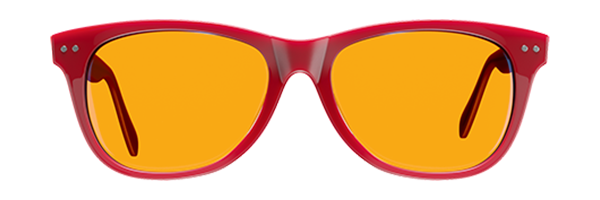
Swannies uses their own proprietary amber lenses to filter blue light. Science has proven that kids and adults who wear them when using electronics before bed will actually get to sleep faster and sleep longer! Choose from both day and night Swannies in kids, men and women styles, in addition to prescription lens options.
Good to know: Swannies offer two kid sizes for 8 and younger and 9+
Cost: $39+
Online: swanwicksleep.com
Foster Grant
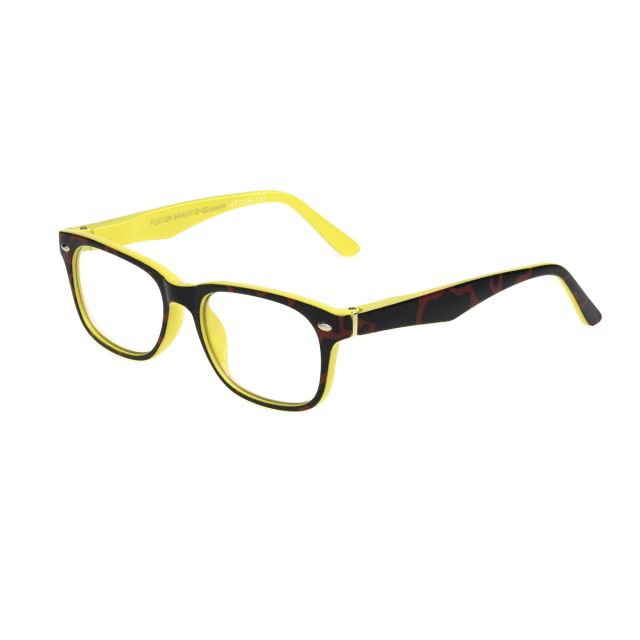
You might think of sunglasses first when you think of Foster Grant but they also offer a selection of stylish, affordable blue-light blocking glasses specifically designed for kids. The glasses are spring-hinged and come in a soft pouch for protection from scratches when not in use.
Good to know: You can find stylish adult sizes, too!
Cost: $20-$30
Online: fostergrant.com
Pixel Eyewear
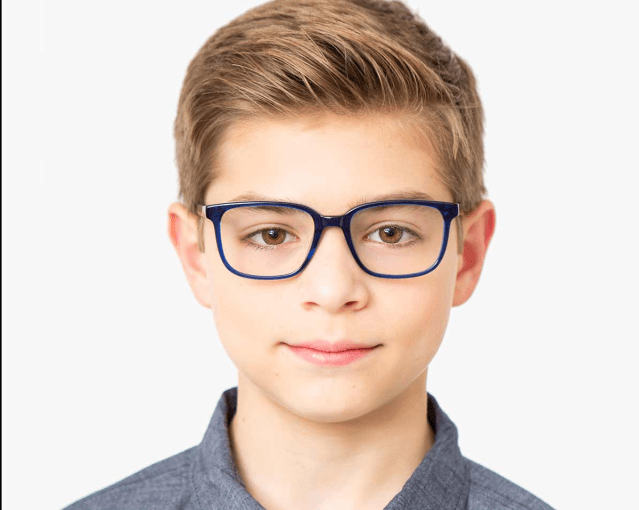
Pixel Eyewear's line of computer glasses offers lens technology that filters 50 percent of blue light and up to 95 percent at the strongest wavelengths, without the yellow tint. Each lens contains nanotechnology which reduces smudges, repel waters and dust and comes with an anti-reflective coating.
Good to Know: Pixel's frames are made in tons of unisex styles and are handcrafted.
Cost: $75 for kids, $95 for adults
Online at pixeleyewear.com
Jins
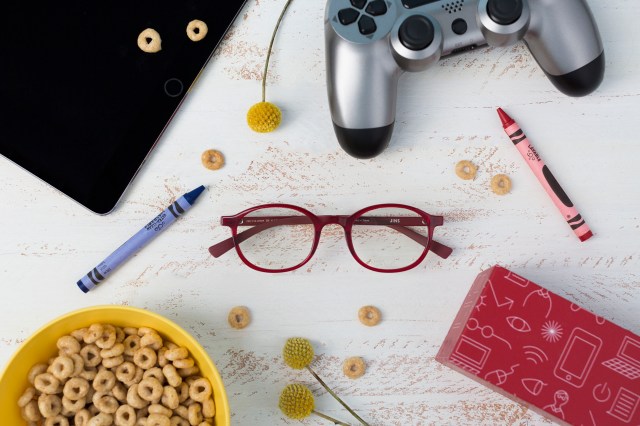
With over 600 frames to choose from, you're bound to find a pair of glasses for the whole family from JINS. Both prescription and non-prescription options are available, in addition to blue light blocking lenses that are great for gamers, professionals and kids who have screen time.
Good to know: Kids boxed blue light glasses come with JINS SCREEN lenses which block 25 percent of blue light. If parents prefer the JINS SCREEN Pro which block 40 percent of blue light, they can add them to any non-boxed frame for an extra $100.
Cost: $80 for blue light blocking glasses, regular frames that can accommodate Pro lenses start at $80
Online: jins.com
Vint & York
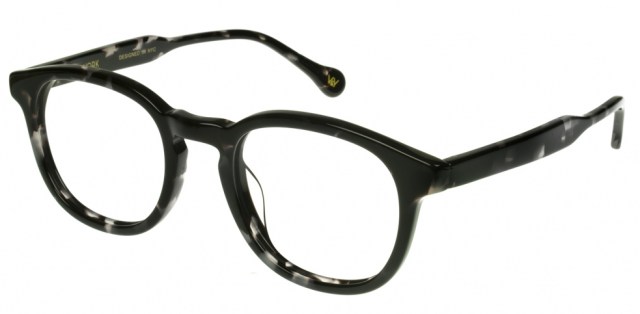
Every pair of Vint & York's glasses come with premium lenses and anti-reflective and scratch coating. The uber stylish frames can be tried on virtually, and when you order a pair with Eyefend blue light lenses, you'll also get a blue light testing kit!
Good to know: At the time of publication of this article, Vint & York did not make a kid-sized option, however the company's Petite collection will make a great fit for tweens and teens, as well as adults.
Cost: Frames start at $94, Eyefend blue light lenses are an additional $50
Why You'll Love Them: Free shipping and one year limited warranty!
Online: vintandyork.com
Shady Rays
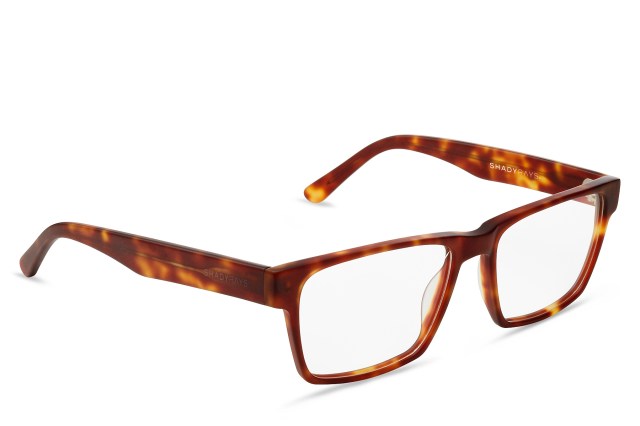
In addition to making stylish, affordable sunglasses Shady Rays also make blue-light blocking glasses so attractive you won't want to take them off for your Zoom meetings.
Good to know: At the time of publication of this article Shady Rays did not make a kid-sized option, however, these will make a great fit for tweens and teens as well as adults.
Cost: Most run around $48 with free shipping
Why You'll Love Them: They are guaranteed for life!
Online at shadyrays.com
Real Shades
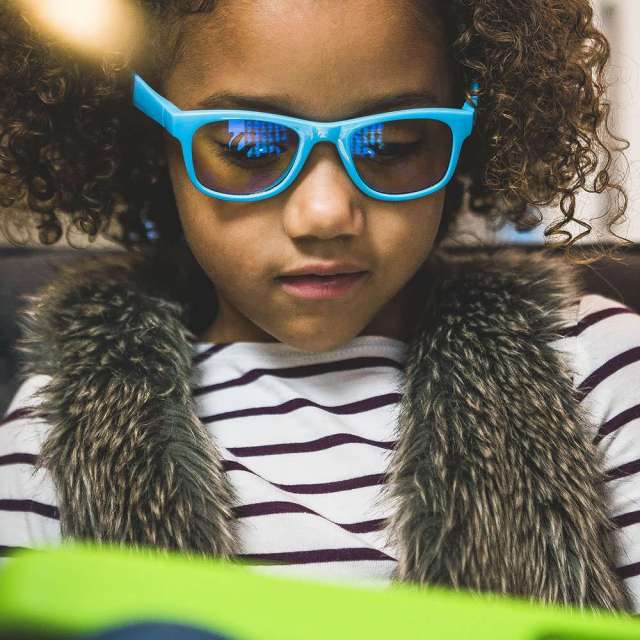
Real Shades has specialized in ophthalmic quality lenses and unbreakable frames for almost 20 years. Their sunglasses lines range from baby to adult, with tons of styles at a great price, and their blue light blocking glasses are no exception.
Cost: Toddler, kids and youth frames are all $19.95 (with seven color choices) and adults are $29.95 (with three color choices).
Why You'll Love It: Each pair of Real Shades offers 100% UVA/UVB protection, blocks 65% of blue light and comes with shatterproof polycarbonate lenses with unbreakable frames. Available also in adult sizes.
Online: realshades.com
Jonas Paul Eyewear

Jonas Paul Eyewear has aimed, and succeeded, at simplifying the glasses frames buying process for families with young kids. They have seven stylish frame shapes to choose from.
How It Works: After signing up online, for $1, Jonas Paul Eyewear will send you and your kiddo a try-on kit of seven actual pairs to try out over the next week. Once you've had a chance to try them on and decide, you can order the glasses directly on their website. Upload your kiddos prescription and when you get to the "lens option" stage, be sure to select Blue Light Lenses ($69).
Good to know: You will need your kid's PD (pupillary distance) so try to remember to ask the doctor to write it on your prescription. Jonas Paul Eyewear has also just launched a brand new line of non-prescription blue light glasses for kids and teens for $59.
Tip: Jonas Paul currently offers two sizes for kids; Small, for ages 4-7 and Large for kids 8-12. They also offer teen sizes.
Cost: Most frames start at just $79 including prescription lenses; prices can vary based on prescription requirements.
Why You'll Love Them: For every pair of glasses you buy, Jonas Paul Eyewear helps provide funding to international organizations that are working to end preventable blindness around the world.
Online: jonaspauleyewear.com
Felix Gray
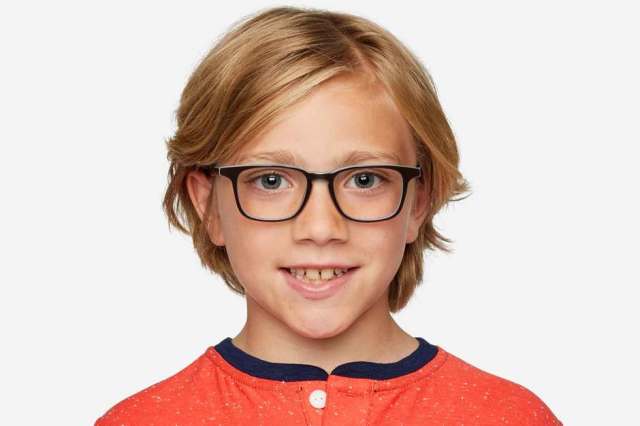
This popular eyewear designer known for bringing blue-light protecting glasses to grownups just launched a line for kids. As of June 2019, their kid frames are available in both prescription and non-prescription form in three very stylish styles fit for any face shape.
How It Works: Choose a pair of frames from their selection online and then upload your prescription. They don't currently offer a try-on kit but their detailed fit guide for kids will help you make sure you're getting the right frame for your little's face.
Cost: Frames start at $95 and come with blue-light blocking technology regardless of prescription strength.
Why You'll Love Them: Even kids that don't have a prescription can sport these stylish lenses to cut down on damaging blue light and glare from laptops, tablets and other screens they encounter.
Online: shopelixgray.com
Fitz Frames

Download the Fitz app to your phone or tablet and start shopping for the perfect fitting frame, whether you're looking for blue-light blocking glasses or prescription lenses. You can upload an image of your child and "try on" frames virtually.
Cost: Starting at $95 for prescriptions, plus $30 for blue-light blocking lenses. There is also a subscription option.
Why You'll Love It: The glasses are all 3-D printed and made to order!
Visit online at fitzframes.com
Pair Eyewear
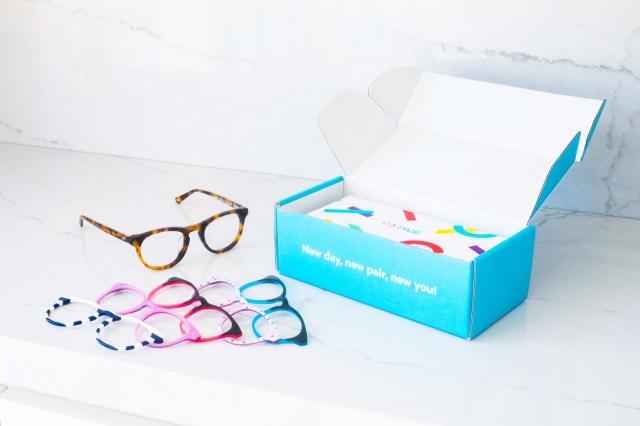
Pair Eyewear is a just-for-kids eyeglass site that offers the unique feature of being able to swap out the tops of the frames to get a new color without having to get a whole second pair. The base frames are available in three colors, but each base frame can be paired with up to ten top frames in different colors and styles.
How It Works: Make your frame selection and then upload your prescription and order your glasses. Just select "blue light lenses" ($49) when you get to the proper point during checkout!
Cost: Base frames are $60 each (five styles and six colors to choose from), and each base can be fit with different top frames for $25 each (up to ten different colors and styles).
Why You'll Love Them: The kids can get multiple looks without having to have multiple pairs and for every pair purchase, a pair is donated to a kid in need.
Online: paireyewear.com
Zenni Optical

Zenni has been around for a while and are a great go-to for glasses, especially for affordable second-pair glasses for active kids or travelers. The site also offers Blokz Blue Blockers that come in virtually clear, photochromatic, sunglasses and Trivex which offers strong impact resistance––aka, perfect for kids.
How it works: Upload a photo to their website to do a virtual "try-on." You will also need your pupillary distance and accurate measurements. Once you've added an image, you can shop a variety of frames and use the try-on feature to get an idea of how they will look.
Cost: Frames can cost as little as under $20, and adding Blokz Blue Blockers starts at just $16.95!
Why You'll Love Them: Because they do grown-up sizes, you can do some sweet mommy-and-me or daddy-and-me styling. They also offer an entire selection of teen styles.
Online: zennioptical.com
––Amber Guetebier & Karly Wood
All the products listed are independently & personally selected by our shopping editors.
If you buy something from the links in this article, we may earn affiliate commission or compensation. Prices and availability reflect the time of publication.
All images courtesy of retailers.
